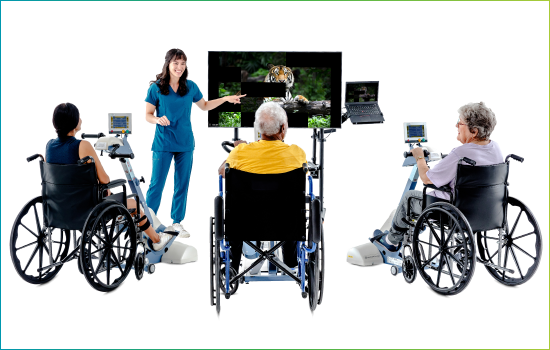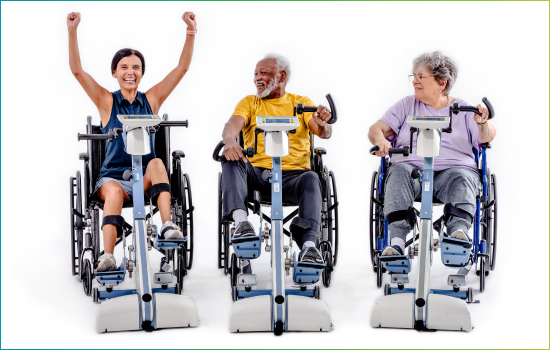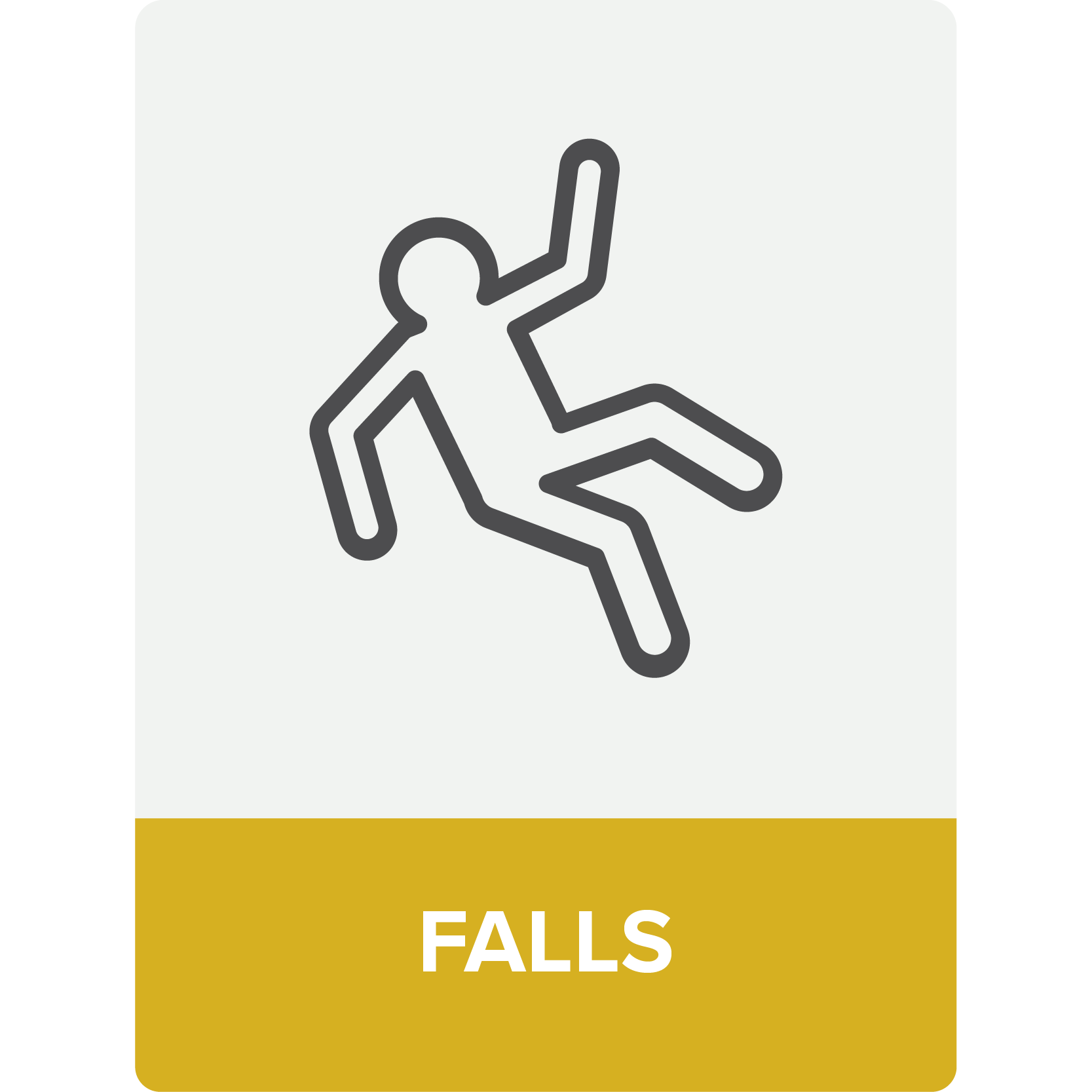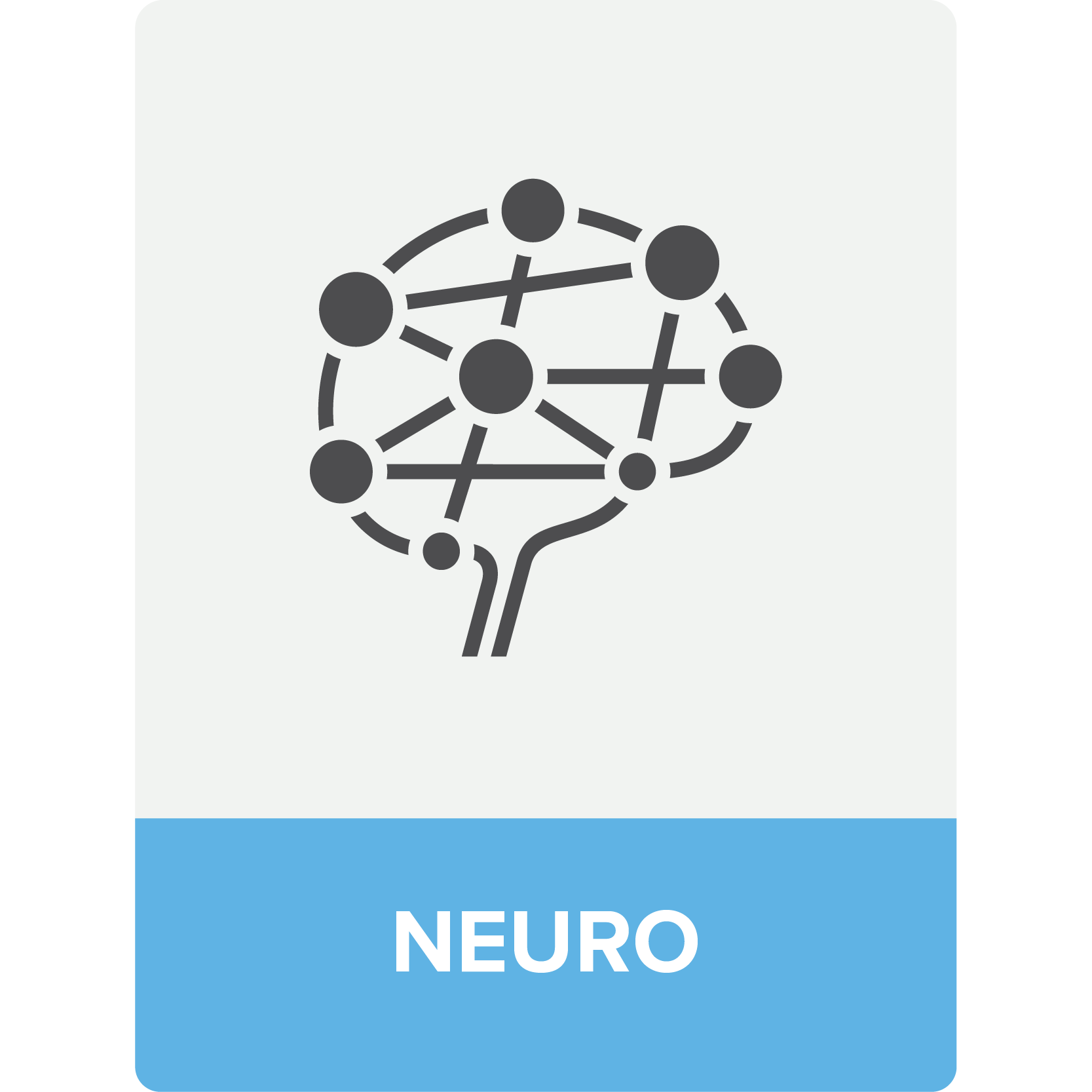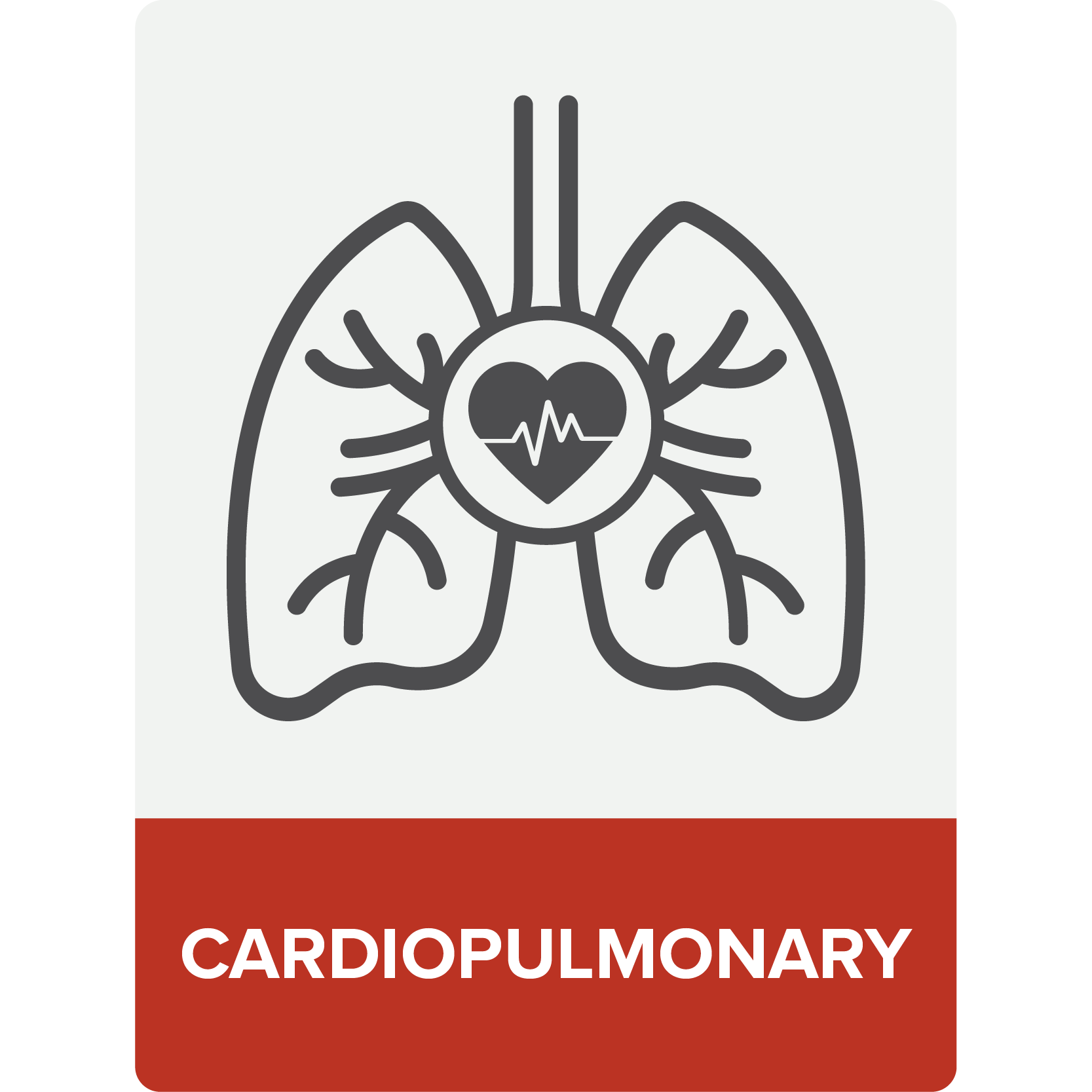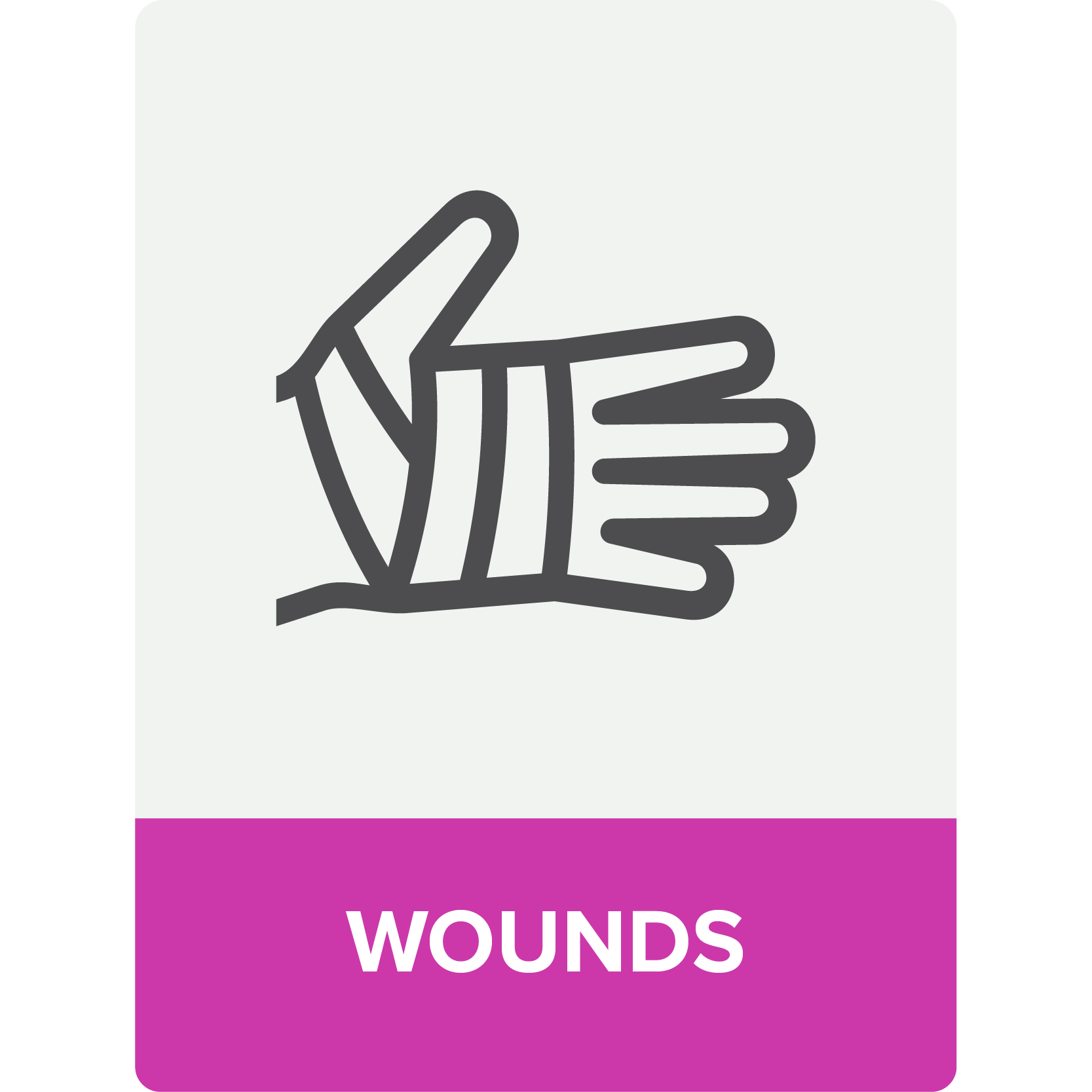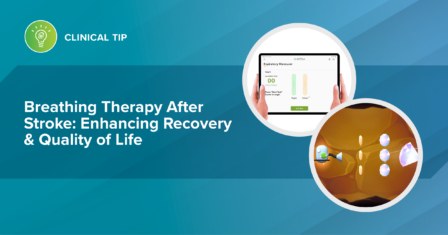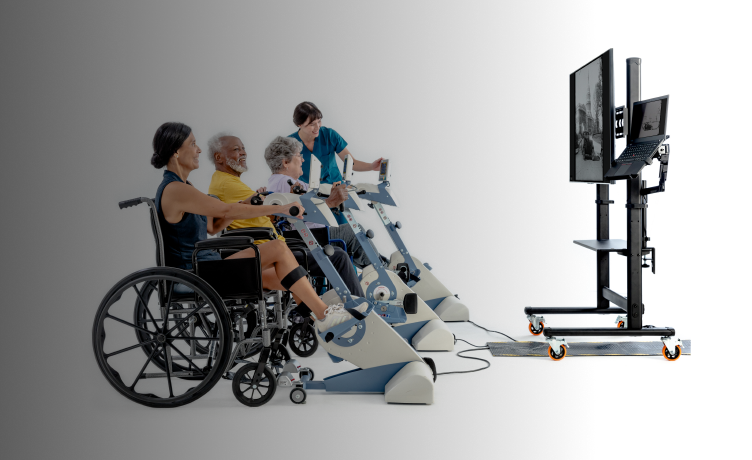
Journey Beyond Recovery with OmniTour™
Boost Engagement, Outcomes, and Care Delivery with Immersive Virtual Cycling
The OmniTour™ Virtual Exercise Experience delivers immersive cycling that boosts patient engagement and outcomes while optimizing care delivery. Virtual outdoor landscapes motivate patients to train more often and with greater effort, enhancing therapeutic results. By seamlessly connecting with multiple OmniCycle® Connect devices, OmniTour enables group therapy options that improve care efficiency and encourage socialization.

*OmniTour™ is compatible with OmniCycle® Connect Advanced Active-Assist Cycle
Reimagine Recovery with Virtual Reality
OmniTour leverages the power of virtual reality to make rehabilitation more engaging, effective, and efficient.
VR therapy can deliver significant benefits:
- Increased patient engagement and motivation1 to participate in treatment
- Longer, harder, and more intense training sessions
- Enhanced mood and reduced apathy2
- Optimized treatment efficiency through more skilled time and opportunities for dual-task training
Elevate Care with Group Therapy
Paired with two or more OmniCycle Connect devices, OmniTour opens the door for group therapy. This helps clinicians efficiently deliver impactful care while fostering valuable social connections among patients.
Group therapy offers benefits to patients and facilities:
- Improved patient self-care performance when paired with individual treatment3
- Increased patient satisfaction with their therapy sessions3
- Reduced feelings of isolation through socialization and connection
- Better engagement through healthy competition
- Optimized resources while maintaining high-quality care
- Enhanced real-world skill applications through more complex training environments
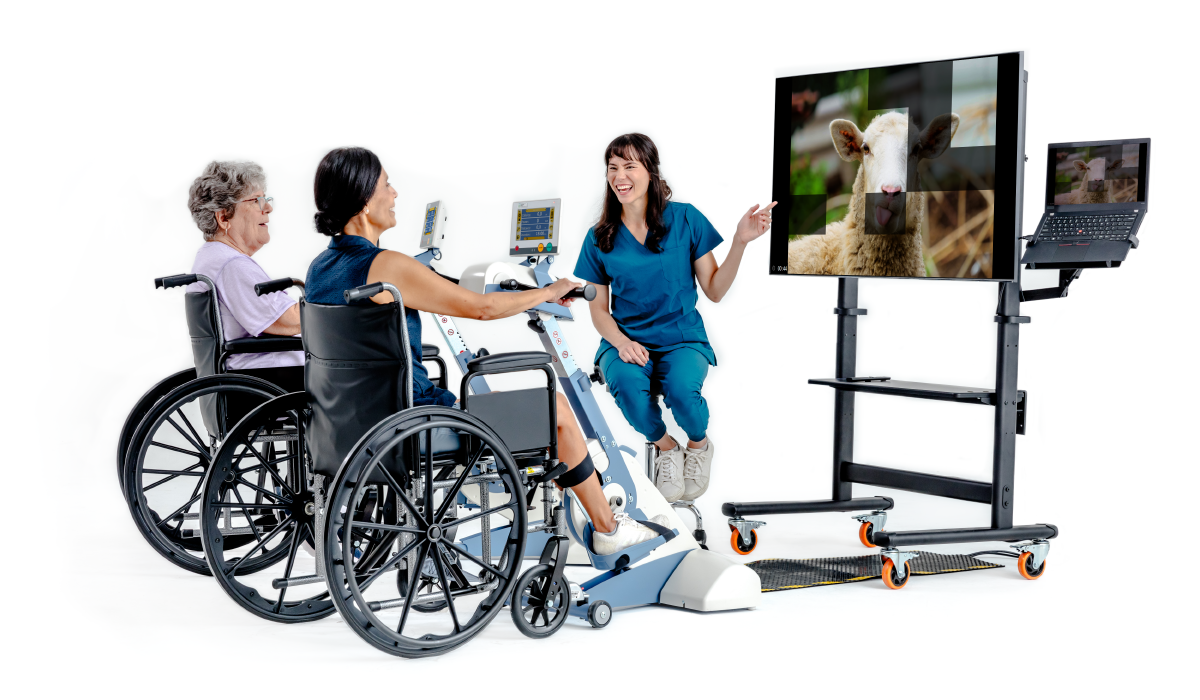
Unique Features:
- Virtual cycling software including more than 100 route movies, recorded in various cities across the world, urban environments, natural environments and at special locations
- Software detects cycling speed to match scenery in real-time
- 55-inch high-definition monitor
- Laptop computer preloaded with OmniTour™ software package
- Mounting arm for ergonomic laptop use by clinicians
- Air mouse remote control for convenient software navigation
- Metal stand on wheel for portability
- Textured anti-trip mat provides cord management and extra traction underfoot to help prevent injuries
- Bluetooth connectivity enables individual, concurrent, or group virtual cycling with OmniCycle® Connect (up to 4 cycles)
Choose a Route
Whether cycling individually or as a part of group therapy, OmniTour™ offers various routes and ride options that engage patients in their treatment and motivate them to keep going.
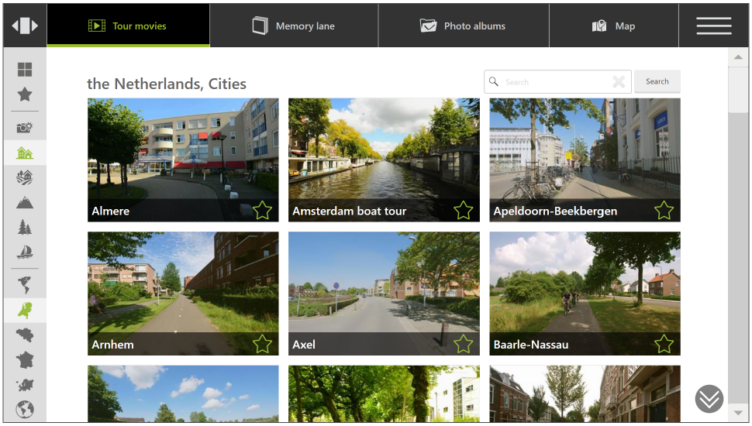
Tour Movies
Tour Movies allow patients to explore more than 100 routes across the world. Patients can ride through Amsterdam’s charming canals, experience the majesty of the Grand Canyon, or even trek through Patagonia.

Memory Lane
Memory Lane makes it possible for patients to journey back in time with the help of archival photos. Patients can cycle through cities of their past from the 1930s all the way to the 1990s.

Photo Albums
Photo Albums give patients the ability to cycle through a range of themed image libraries, including animals, food and drink, sports, transportation, and more. Challenge patients with “Guess the Picture” mode, which gradually reveals each photo in puzzle pieces, or simply use the photos to spark conversation.
Explore OmniTour’s Results
Find out how inpatient/outpatient and short-term rehab facilities are leveraging OmniTour to improve care delivery, productivity, and patient engagement, as well as the results they’ve seen to date.
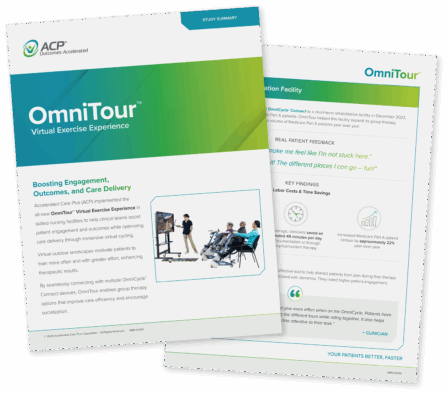
OmniTour™ Product Overview Video
ACP Evidence-Based Clinical Programs
Cycling, a key component of many of our clinical programs, has been proven to enhance skeletal muscle power and endurance, improve gait parameters, and boost overall functional performance. It also plays a crucial role in reducing the risk and fear of falling, promoting better mental health, and ultimately improving patients’ quality of life.4
References:
- Kizmaz, E., Telli Atalay, O., Çetin, N., & Ugurlu, E. (2024). Virtual reality for COPD exacerbation: A randomized controlled trial. Respiratory Medicine, 230, 107696. https://doi.org/10.1016/j.rmed.2024.107696
- D’Cunha, N. M., Nguyen, D., Naumovski, N., McKune, A. J., Kellett, J., Georgousopoulou, E. N., Frost, J., & Isbel, S. (2019). A mini-review of virtual reality-based interventions to promote well-being for people living with dementia and mild cognitive impairment. Gerontology, 65(4), 430-440. https://doi.org/10.1159/000500040
- Luchynsky, M. K., Ashbaugh, K., Bowser, A., Campisi, E., Gleixner, M., Heinbach, B., & Snak, A. (2023). E cacy of utilizing the group mode of treatment delivery in OT for skilled nursing facility settings. The American Journal of Occupational Therapy, 77(Supplement_2), 7711510267p1. https://doi.org/10.5014/ajot.2023.77S2-PO267
- Kardan, M., Akter, T., Iqbal, M., Tcymbal, A., Messing, S., Gelius, P., & Abu-Omar, K. (2023). Cycling in older adults: A scoping review. Frontiers in Sports and Active Living, 5, 1157503. https://doi.org/10.3389/fspor.2023.1157503
Latest Updates
Subscribe to stay up-to-date on our latest posts.

